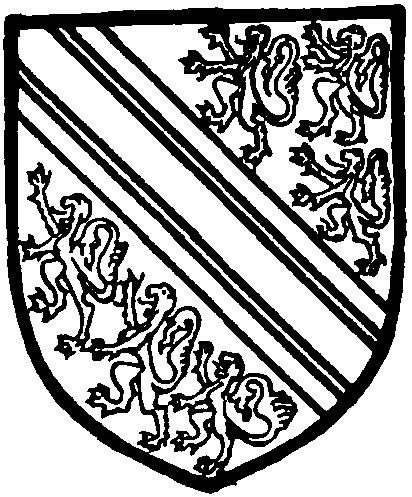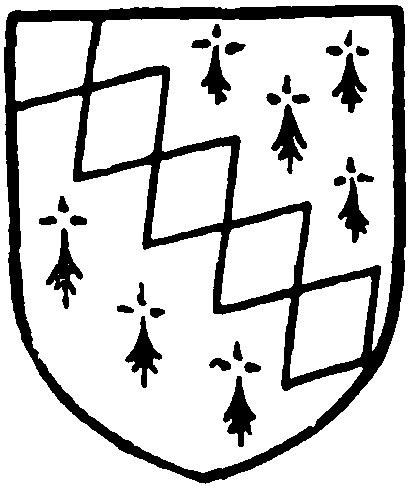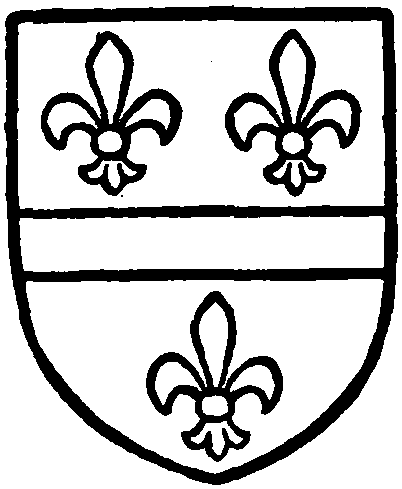A History of the County of Hampshire: Volume 4. Originally published by Victoria County History, London, 1911.
This free content was digitised by double rekeying. All rights reserved.
'Parishes: Eastrop', in A History of the County of Hampshire: Volume 4, ed. William Page (London, 1911), British History Online https://prod.british-history.ac.uk/vch/hants/vol4/pp147-149 [accessed 23 April 2025].
'Parishes: Eastrop', in A History of the County of Hampshire: Volume 4. Edited by William Page (London, 1911), British History Online, accessed April 23, 2025, https://prod.british-history.ac.uk/vch/hants/vol4/pp147-149.
"Parishes: Eastrop". A History of the County of Hampshire: Volume 4. Ed. William Page (London, 1911), British History Online. Web. 23 April 2025. https://prod.british-history.ac.uk/vch/hants/vol4/pp147-149.
In this section
EASTROP
Estrope (xi cent.); Estropa (xii cent.); Estrop Brayboef (xiii cent.); Esthrop, Esttroup (xiv cent.); Estroppe (xv cent.); Estrip (xviii cent.).
Eastrop is a small parish adjoining Basingstoke on the east, and may be considered to form a suburb of that town. The urban portion was annexed to the borough in 1892 and the rural portion in 1894 to the parish of Basing. Part of its southern boundary is formed by the main road from Basingstoke to Staines, and it is intersected from west to east by the River Loddon and the Basingstoke Canal. To the south of Eastrop Bridge at the end of Goat Lane stands St. Mary's Church, and a short distance to the east of the church is Eastrop Farm. The soil is loam, the subsoil chalk, and the chiet crops are roots, sainfoin, wheat, barley and oats.
Among place-names in the parish mentioned in early records are the following:—Hackwood Field, Holy Ghost Field, and Whitditch (xvi cent.). (fn. 1)
Manor
The manor of EASTROP which Carle had held of Edward the Confessor belonged to Alvred de Merleberge in 1086, being held of him by Hugh. (fn. 2) Humphrey de Bohun Earl of Hereford and Essex was returned as the overlord in 1275. (fn. 3) Again, his descendant Humphrey de Bohun Earl of Hereford and Essex, as guardian of the lands and heir of the lord of the manor, presented to the church during the episcopacy of William Edendon (1346–66), (fn. 4) and the manor continued to be held by the Earls of Hereford and Essex until early in the 16th century. (fn. 5) Hugh, the tenant of Eastrop at the time of the Domesday Survey, was probably the ancestor of the Brayboefs who held the manor under the Earls of Hereford and Essex until the middle of the 14th century. In 1167 Eastrop was in the possession of another Hugh (fn. 6) —probably identical with the Hugh de Brayboef who witnessed a charter of John de Port to the priory of Monk Sherborne. (fn. 7) He was succeeded by Henry de Brayboef, who as lord of Eastrop granted a messuage and virgate of land in Eastrop to Richard son of Robert in 1202 to hold of him by the service of the twentieth part of a knight's fee. (fn. 8) In 1238 another Henry de Brayboef (fn. 9) granted a virgate of land in Eastrop to Walter de Merton of Basingstoke, (fn. 10) and he was followed by William de Brayboef, who in 1275 was stated to be holding half a knight's fee in Eastrop of the Earl of Hereford. (fn. 11) In 1280 this same William was summoned to show by what right he claimed to have free chase for cats, hares and foxes in the hundred of Basingstoke. (fn. 12) William asserted that Richard I had granted the privilege to his ancestors, and the knights of the shire chosen as jurors confirmed his statement. (fn. 13) He died in 1283, leaving as his heir his son Hugh, (fn. 14) who in 1333 granted a rent of £100 from the manor and advowson to his grandson Hugh son of William de Brayboef. (fn. 15) It is doubtful whether this latter Hugh ever succeeded to the manor, for in 1346 he was dead and 'Oliver le Boun' (sic) was holding 'nomine custodie' half a fee in Eastrop. (fn. 16) His heir was his daughter Joan, who apparently married (1) Sir John de Podenhale (fn. 17) and (2) Sir Hugh de Camois. (fn. 18) Sir Hugh obtained a grant of free warren in his demesne lands of Eastrop in 1367, (fn. 19) and died leaving as his heir his daughter Elizabeth, (fn. 20) who as Elizabeth Hamelyn was returned in 1428 as holding half a fee in Eastrop formerly belonging to Hugh de Brayboef. (fn. 21) Elizabeth left as her heir her daughter Egidia, who married (1) Robert Ashley and (2) Sir Thomas Thame. (fn. 22) In 1472 Egidia released the manor to Maurice Berkeley for the use of John Whitehead and Katherine his wife, (fn. 23) and died four years later. (fn. 24) On the death of John Whitehead in 1486 the manor of Eastrop valued at 5 marks passed to his widow Katherine, (fn. 25) who died the following year. Her heir was her son Maurice Whitehead, (fn. 26) who died in 1496–7, leaving as his heir his son John, aged nine. (fn. 27) John apparently died while still a minor, and was succeeded by George Whitehead—probably his brother (fn. 28) —who died seised of the manor of Eastrop in 1520, his heir being his infant son John. (fn. 29) John left no issue, and his property passed to his brother Augustine, who died in 1557, leaving as his heir his son Richard. (fn. 30) In 1561 Richard, in return for a money payment, was released from attendance at the Basingstoke hundred units for a year, (fn. 31) and twenty-four years later at the view of frankpledge held at Basingstoke on 13 November 1585 he was ordered to make a gate leading into the field called Northdoune, and to refrain from making chase and rechase with his sheep out of the demesne of Basingstoke into the demesne of Eastrop, feeding them in fields called Hackwood Field and Holy Ghost Field, and placing them at night in Whitditch parcel of his manor of Eastrop. (fn. 32) On his death in 1593 Eastrop passed to his son Henry Whitehead, (fn. 33) who on his death in 1629 was followed by his son Richard. (fn. 34) Richard presented a rector in 1662, (fn. 35) and the follow ing entry under 1686 in the Basingstoke records, 'Received of Mr. Whitehead lord of the manor of Eastrop for a heriot for his father's death, being agreed on by the mayor and company for a standing heriot upon an alienation £5,' (fn. 36) shows the manor still in the possession of the Whiteheads. Within the next ten years, however, it had passed by sale into the Searle family, William Searle, merchant, presenting to the church in 1696. (fn. 37) He was succeeded by Gilbert Searle, who presented a rector in 1699, (fn. 38) and eighteen years later paid a sum of 3s. for 'Estrop late Whitehead's.' (fn. 39) Peter Searle, son and heir of Gilbert, who was a minor under the guardianship of his mother in 1732, (fn. 40) presented a rector in 1747, (fn. 41) and another Peter Searle appears as patron in 1784 (fn. 42) and again in 1805. (fn. 43)

Bohun. Azure a bend argent cotised or between six lioncels or.

Brayboef. Ermine a bend indented—.

Whitehead. Azure a fesse between three fieurs de lis or.
From this date all manorial rights in Eastrop apparently ceased, but Lord Bolton at the present time owns nearly all the parish. (fn. 44)
The modern Eastrop Mill marks the site of the mill appurtenant to the manor in 1086. (fn. 45) At the beginning of the reign of George II there was a dispute between Jacob Greene, lessee of the mill under Peter Searle, the lord of the manor, and the mayor and corporation of Basingstoke, the former alleging that the stream which worked the mill had been diverted by the mayor and corporation 'so that he could grind but very little corn, but was obliged to hire to have the greatest part of the corn ground at other mills, which was a great charge and very prejudicial to him and contrary to the covenants of the lease.' (fn. 46) The case was tried at the Lent Assizes held at Winchester in 1735, when a verdict was obtained by the defendants. (fn. 47)
Church
The church of ST. MARY THE VIRGIN is a small modern building consisting of a chancel, north organ chamber, vestry, nave and south porch. Beyond two 17th-century gravestones and a later one there is nothing of any age in the building. It is proposed to build a larger church in the near future for the growing needs of the parish.
The chancel is built of brick with stone dressings; it has an east window with wood frame and tracery, and a round-headed window on either side, of which that on the north looks into the vestry. It is divided from both organ chamber and nave by pointed archways.
The nave walls are faced with rough ashlar; there are two two-light windows on either side and one to the west of three lights. Over the west wall is a wooden bell-turret covered by a pyramidal tiled roof.
The plate consists of a plated chalice dated 1821, two plated patens and a plated flagon.
Apparently the only old register is that containing marriages from 1754 to 1812.
Advowson
The advowson of the church, or, as it was called in early times, the chapel of Eastrop, (fn. 48) followed the descent of the manor until the early 19th century, when it was held by the Searle family. (fn. 49) From 1879 it was in the gift of the Rev. B. J. Shields, who himself was rector 1879–97. It is now in the gift of his trustees.
At the beginning of the 14th century there was a dispute between the Prior of Selborne and the rector of the church concerning the tithes coming from 73 acres of land within the limits of the parish. (fn. 50)
There was also a chapel called Eastrop Chapel which was reckoned in the parish of Basingstoke. This chapel was disendowed in 1536 and the building granted to John Lesse, who transformed it into a mill. (fn. 51)